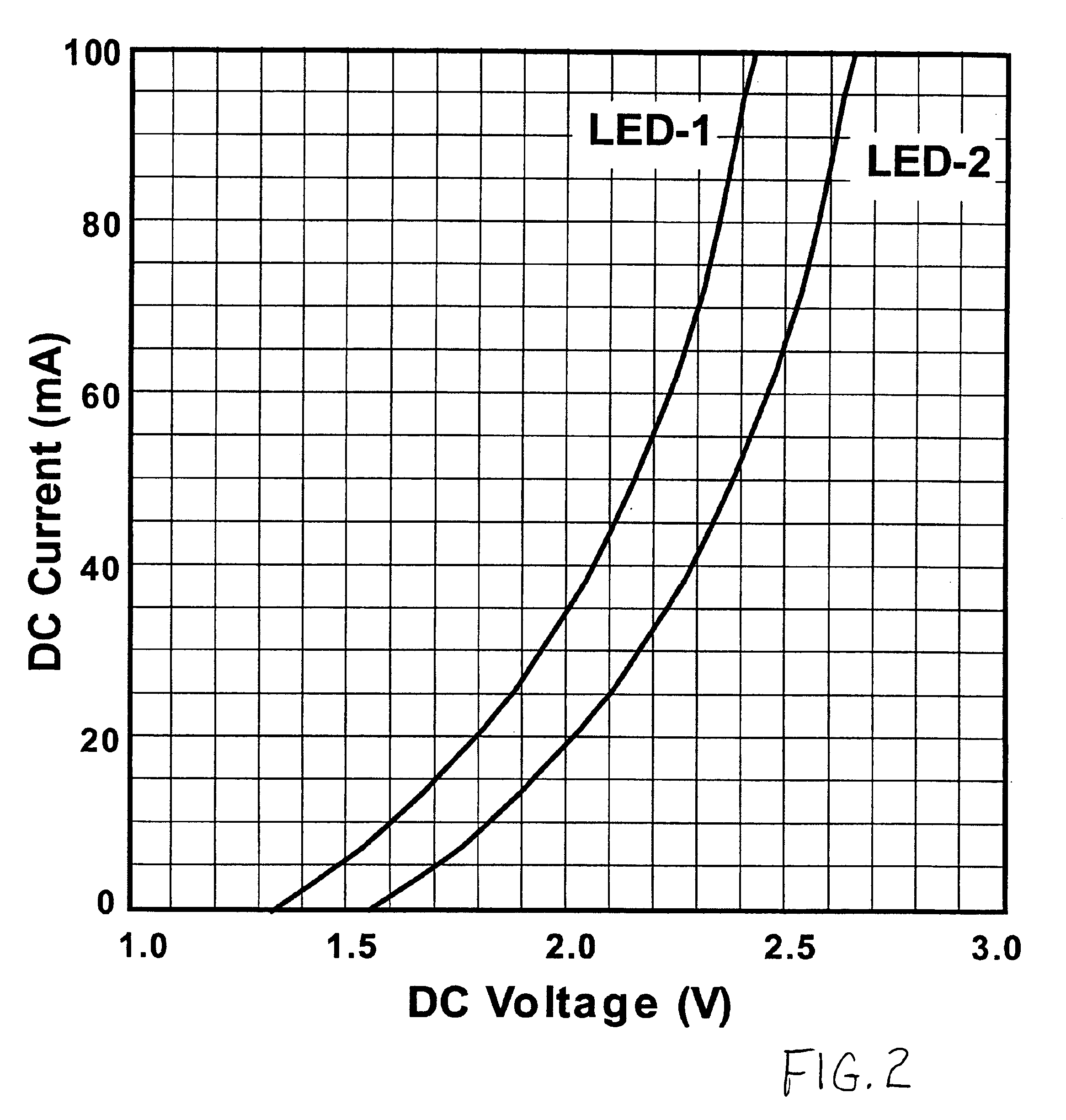FET current regulation of LEDs
- Summary
- Abstract
- Description
- Claims
- Application Information
AI Technical Summary
Benefits of technology
Problems solved by technology
Method used
Image
Examples
Embodiment Construction
to LED Light String” which is hereby incorporated by reference, that by matching waveform-dependent LED voltages to the stable source voltage, LED current can remain operationally stable without current limiting circuitry. While this “direct drive” approach is simple, inexpensive and electrically efficient, with no added power loss, there are also several drawbacks to this “direct drive” method.
[0006]One drawback to “direct drive” of LEDs is that the method of voltage matching requires a stable source voltage—this can often be met with AC line voltage (e.g., 120 VAC) but it may difficult to meet with batteries having large voltage droop. A second drawback to “direct drive” is inherent sensitivity to voltage variations. These voltage variations are of two primary types: source and device. An example of source voltage variation is difference in line voltage between, say, a place in California versus a place in Pennsylvania, where the latter often is several volts closer to the nominal...
PUM
 Login to View More
Login to View More Abstract
Description
Claims
Application Information
 Login to View More
Login to View More - R&D
- Intellectual Property
- Life Sciences
- Materials
- Tech Scout
- Unparalleled Data Quality
- Higher Quality Content
- 60% Fewer Hallucinations
Browse by: Latest US Patents, China's latest patents, Technical Efficacy Thesaurus, Application Domain, Technology Topic, Popular Technical Reports.
© 2025 PatSnap. All rights reserved.Legal|Privacy policy|Modern Slavery Act Transparency Statement|Sitemap|About US| Contact US: help@patsnap.com



